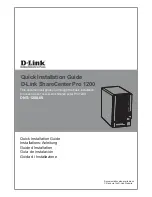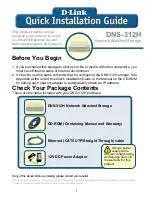
RAIDBank4 Owner’s Manual
14
RAID 0 (Striping)
This RAID algorithm writes data across multiple disk drives instead of just one disk drive. RAID
0 does not provide any data redundancy, but
does offer the best high-speed data throughput.
RAID 0 breaks up data into smaller blocks and
then writes a block to each drive in the array.
Pros: Disk striping enhances both read and
write performance because multiple drives
are accessed simultaneously,
Cons: The reliability of RAID Level 0 is less than
any of its member disk drives due to its lack
of redundancy.
RAID 1 (Disk Mirroring)
RAID 1, also known as “disk mirroring”, distributes duplicate data simultaneously to 2 disk drives.
Pros: RAID 1 offers extremely high data reliability
as all the data is redundant. If one drive
fails, all data (and software applications)
are preserved on the other drive. Read
performance may be enhanced as the
array controller can access both members
of a mirrored pair in parallel.
Cons: RAID 1 volume requires double the raw
data storage capacity. During writes, there
will be a minor performance penalty when
compared to writing to a single disk.
RAID 10 (Striped Mirror)
RAID 10 is a combination of RAID 0 and RAID 1, combing striping with disk mirroring. RAID
Level 10 combines the fast performance of
Level 0 with the data redundancy of Leve1 1.
In this configuration, data is distributed across
several disk drives, similar to Level 0, which are
then duplicated to another set of drive for data
protection. RAID 10 provides the highest read/
write performance of any of the Hybrid RAID
levels, but at the cost of doubling the required
data storage capacity.
Pros: Fastest read/write performance of any of
the Hybrid RAID levels High data reliability
as all the data is redundant.
Cons: Requires double the raw data storage capacity
2-Understanding RAID















































